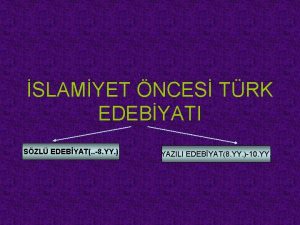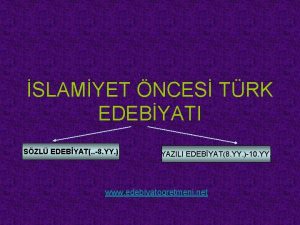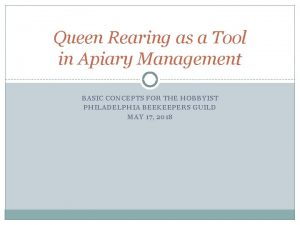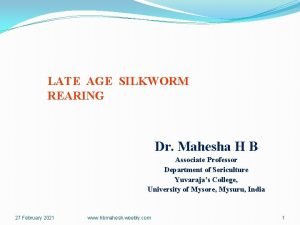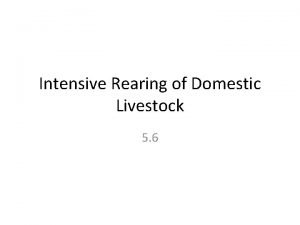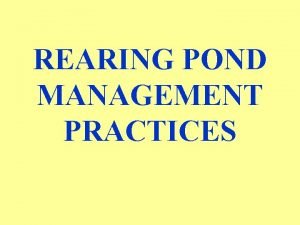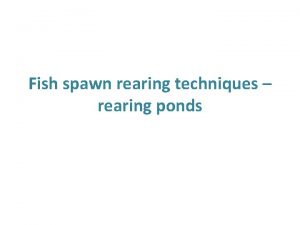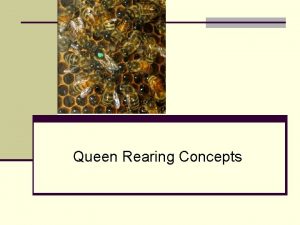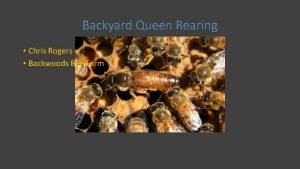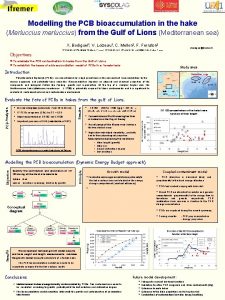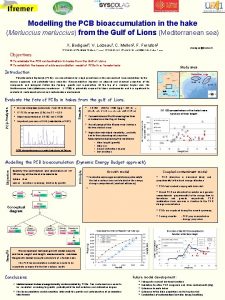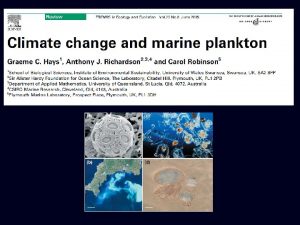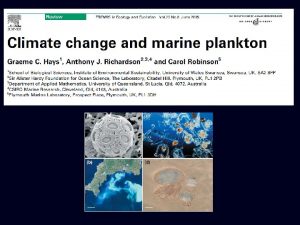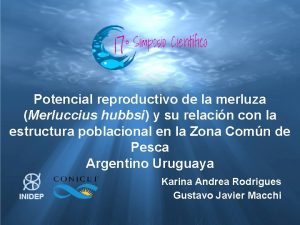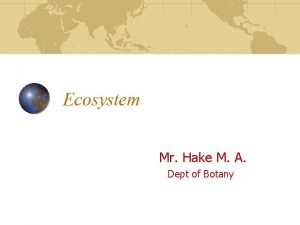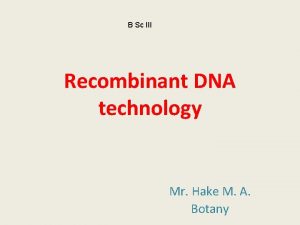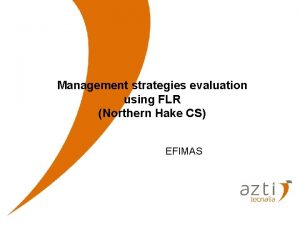CHALLENGES IN THE REARING OF EUROPEAN HAKE MERLUCCIUS















- Slides: 15

CHALLENGES IN THE REARING OF EUROPEAN HAKE MERLUCCIUS AUDREY J. GEFFEN, ANNE-LAURE GROISON, LENE KLEPPE, University of Bergen, Norway. HÉLÈNE du PONTUAL, AURELIE JOLIVET, Ifremer, STH/LASAA, Brest, France. RAGNAR SALTE, Merlu. Nor, Brekke / Norwegian University of Life Sciences, Ås, Norway. Department of Biology Fisheries ecology and Aquaculture

Why Hake? – Good marketing opportunities Interesting biology Why in Norway? – Good technical foundation, Good access to local wild populations

Short history of hake larval rearing 1997, 1998, 1999 - Reidun Bjelland Anne Berit Skiftesvik (Institute for Marine Research– Austevoll Research Station) Bjelland & Skiftesvik 2006 2005 – Anne Laure Groison (Department of Biology, Ui. B) – Ragnar Salte (Department of Animal and Aquacultural Sciences, Norwegian University of Life Sciences) establishes Merlu. NOR and captive broodstock 2006 – Anne Laure Groison (Ui. B), Aurelie Jolivet and Hélène du Pontual (Ifremer, Brest) 2007 – Natural Spawning!!!! Merlu. Nor and Ifremer – Aurelie Jolivet and Hélène du Pontual (Ifremer, Brest) – Audrey Geffen (Ui. B) 2008 – Natural Spawning at Merlu. NOR - Ui. B

Status and challenges • One captive broodstock • One instance of successful rearing • Larval rearing until 25 dph, past first feeding Technical Challenges Biological Challenges Photos: J. Skadal

Technical Challenge -1 Eggs have been obtained by stripping wildcaught fish

Captive spawning Captive populations established at Brest, France and at Brekke, Norway Egg production in both populations Fertilized eggs leading to larvae produced by Brekke group Merlu. Nor – Brekke, Norway

Egg production Spawning first observed at Brest and at Brekke in 2007 2 Females at Brekke produced 17 batches in 2007, 3 batches so far in 2008 Photo: J. Skadal Captive spawning pattern compares well with field data

Technical Challenge -2 Photo: J. Skadal

Biological Challenges – 1: Growth Pattern Photo: J. Skadal Hatching – Day 0




Biological Problems – 2: Establishment of feeding 3 Dph 12 Dph 10 Dph Photos: J. Skadal 19 Dph

Challenges? Broodstock, Incubation Rearing conditions: light levels Feeding: Prey size, swimming behaviour Coombs & Mitchell, 1982 Light levels In tanks ~ 2 -5 µmol s-1 m-2 At surface 8 - 15 µmol s-1 m-2

Thanks!
 Taştir örneği
Taştir örneği Terkibi bent örneği
Terkibi bent örneği Terkibibent
Terkibibent Rubai örnekleri
Rubai örnekleri Conclusion of nursery management
Conclusion of nursery management Miller method queen rearing
Miller method queen rearing Advantages and disadvantages of sericulture
Advantages and disadvantages of sericulture Intensive rearing of livestock
Intensive rearing of livestock Rearing pond management
Rearing pond management Spawn rearing techniques
Spawn rearing techniques Queen rearing calendar
Queen rearing calendar Queen rearing calendar
Queen rearing calendar Các châu lục và đại dương trên thế giới
Các châu lục và đại dương trên thế giới Từ ngữ thể hiện lòng nhân hậu
Từ ngữ thể hiện lòng nhân hậu Diễn thế sinh thái là
Diễn thế sinh thái là Tư thế ngồi viết
Tư thế ngồi viết

